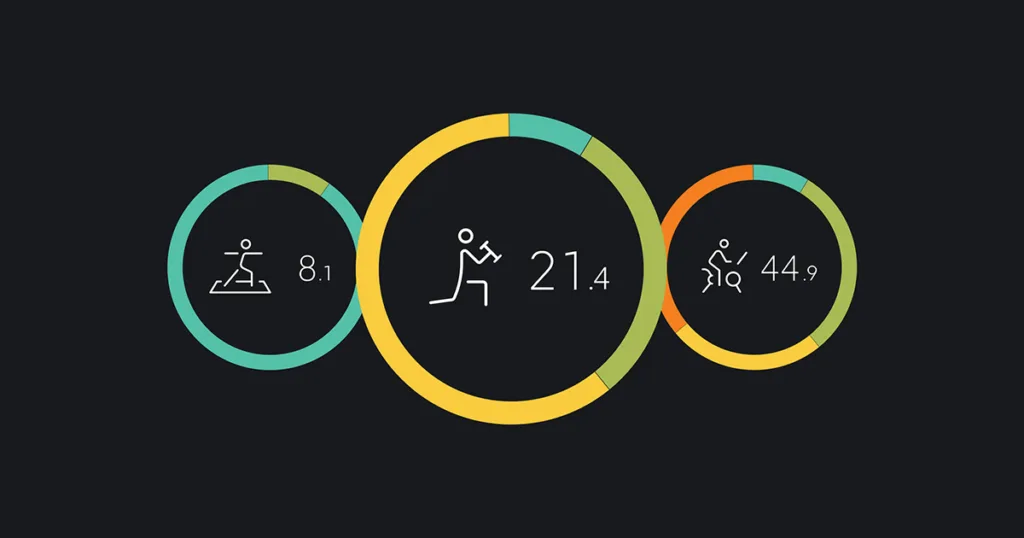Peloton is a popular fitness platform that allows users to take live and on-demand classes, both cardio and strength training, from the comfort of their own homes. One of the features of Peloton is the Strive Score, a number that indicates how hard a user is working during a workout. But what does it mean and how can you use it to improve your fitness?
The Strive Score is a metric that quantifies the intensity of your workout, based on your heart rate. Peloton uses a proprietary algorithm that takes into account your age, weight, and fitness level to calculate your maximum heart rate. The Strive Score is then calculated as a percentage of your maximum heart rate, with a higher score indicating a more intense workout.
The Strive Score is calculated in real-time during a workout, based on your heart rate. Peloton tracks your heart rate using a chest strap or wrist-based monitor, and displays your heart rate and Strive Score on the screen during the workout. The Strive Score is also recorded and can be viewed after the workout is completed.
The Strive Score ranges from 0 to 100, with a higher score indicating a more intense workout. However, thre is no “good” or “bad” Strive Score, as it depends on your fitness level, goals, and the type of workout you are doing. In general, the recommendation is to achieve about 80-85 percent of your predicted maximum heart rate during exercise, which for a 30-year-old would be roughly 152-161 beats per minute. However, this is just a guideline, and you should consult with your doctor or a fitness professional to determine your target heart rate zone.
The Strive Score can be a useful tool to monitor your progress and motivate you to push harder during your workouts. By aiming to increase your Strive Score over time, you can gradually increase the intensity of your workouts and improve your fitness level. However, it’s important to listen to your body and not push yourself too hard, especially if you are new to exercise or have any health concerns.
The Peloton Strive Score is a useful metric that can help you monitor your workout intensity and track your progress over time. However, it’s important to use it in conjunction with other measures of fitness, such as strength, flexibility, and overall health. By using the Strive Score as a tool to motivate and challenge yourself, you can achieve your fitness goals and improve your overall health and well-being.
What Is A Good Strive Score On Peloton?
A good strive score on Peloton is subjective and can vary depending on various factors such as age, fitness level, and personal goals. However, the strive score is calculated based on the amount of effort put into a workout, which is determined by heart rate and cadence. Peloton recommends achieving about 80-85 percent of your predicted max heart rate during exercise, which for a 30-year-old would be approximately 152-161 beats per minute. Therefore, a higher strive score would indicte that the user has put in more effort during the workout. It is important to note that the strive score should be used as a tool to track progress and set personal goals, rather than comparing it to others.

Is A Higher Strive Score Better Peloton?
In Peloton, a Strive Score is a measure of how hard you pushed yourself during a workout session. It is calculated based on your heart rate and the amount of time you spend in different heart rate zones. The higher your Strive Score, the harder you worked during the workout.
However, it’s important to keep in mind that a higher Strive Score doesn’t necessarily mean a better workout. It simply means that you pushed yourself harder during that particlar workout. The optimal Strive Score for an individual may vary based on their fitness level, age, and other factors.
Additionally, the Strive Score is not a competition between individuals. It’s a personal metric that helps you track your progress and challenge yourself to improve your fitness level. It’s important to focus on your own goals and listen to your body rather than comparing your Strive Score with others.
A higher Strive Score may indicate a harder workout, but it’s not necessarily better or more effective. It’s a personal metric that should be used to track your own progress and improve your fitness level over time.
What Is The Max Strive Score?
The maximum Strive Score value varies depending on the duration of measurement. According to available data, for a 45-minute duration, the maximum Strive Score recorded is 104.4. For a 60-minute duration, the maximum Strive Score recorded is 139.2. For a 90-minute duration, the maximum Strive Score recorded is 208.8. It is important to note that the Strive Score is a measure of heart rate over time and can vary depending on individual factors such as age, fitness level, and health status.
Conclusion
The Peloton Strive Score is a useful metric that measures the intensity of your workout by analyzing your heart rate over time. While it can be tempting to compare your score to others in a leaderboard, it’s important to remember that everyone has different fitness levels and goals. The recommended heart rate zone for a workout is around 80-85% of your maximum heart rate, which varies depending on age and oter factors. Ultimately, the Strive Score is a tool to help you track your progress and challenge yourself, but it’s only one aspect of a successful workout routine. Remember to listen to your body and adjust your intensity as needed to avoid injury and achieve your fitness goals.
